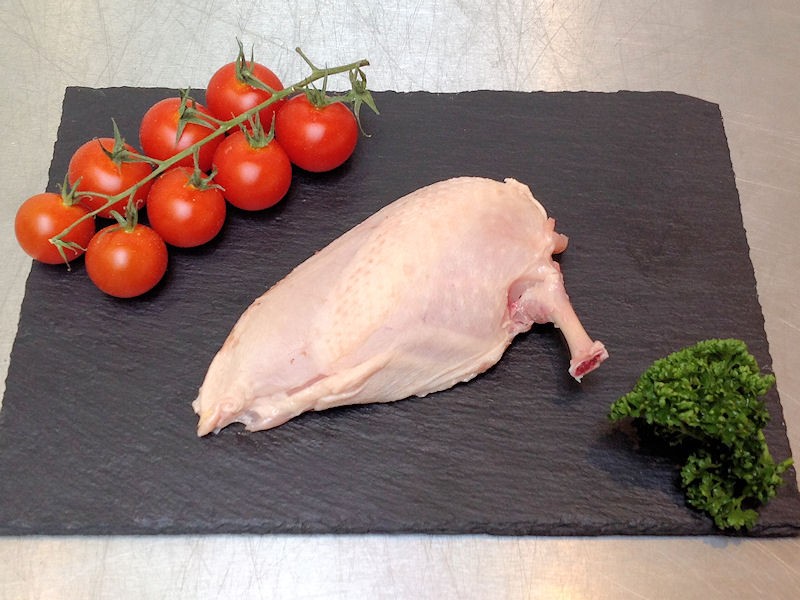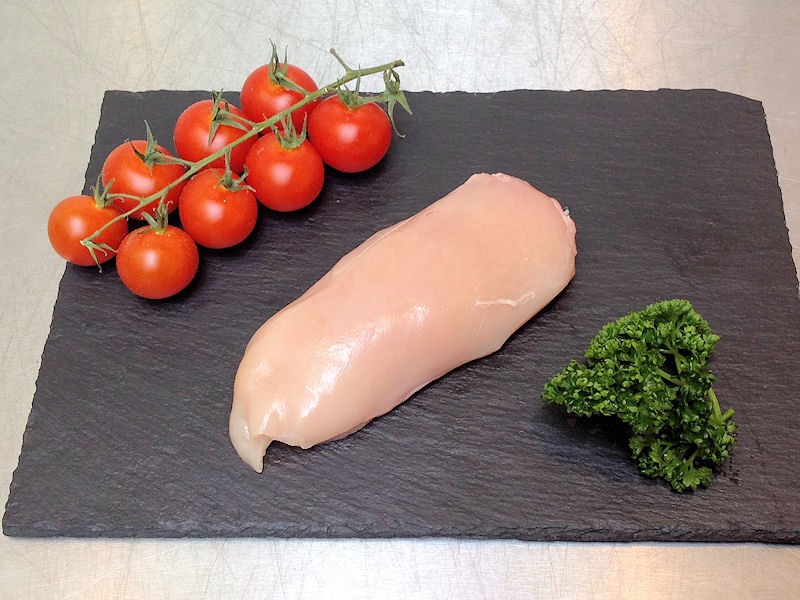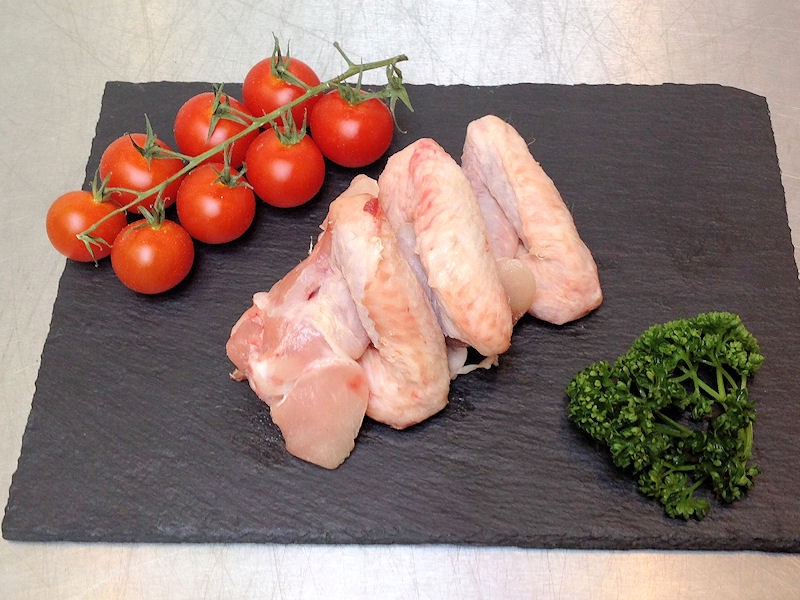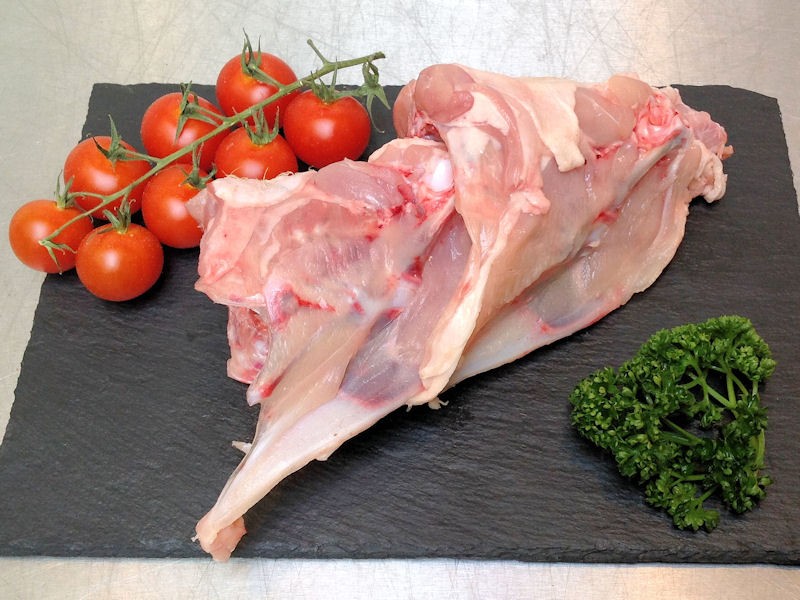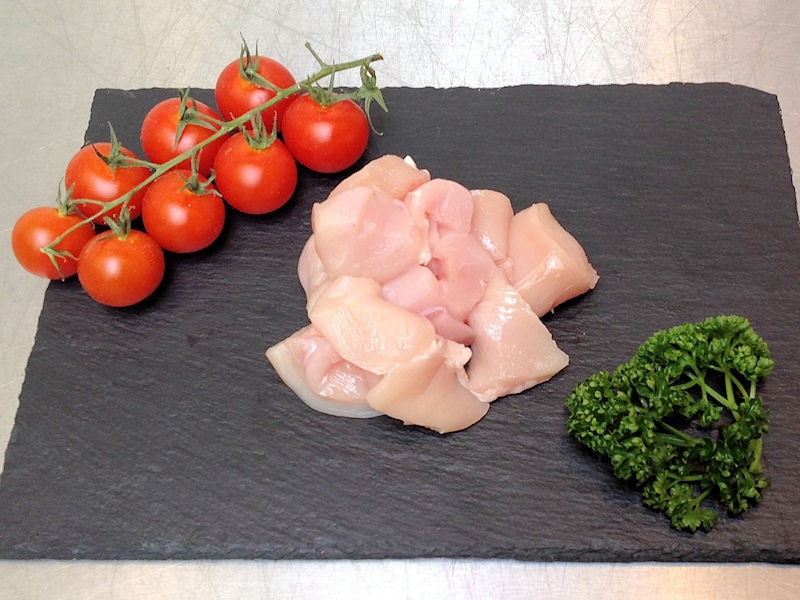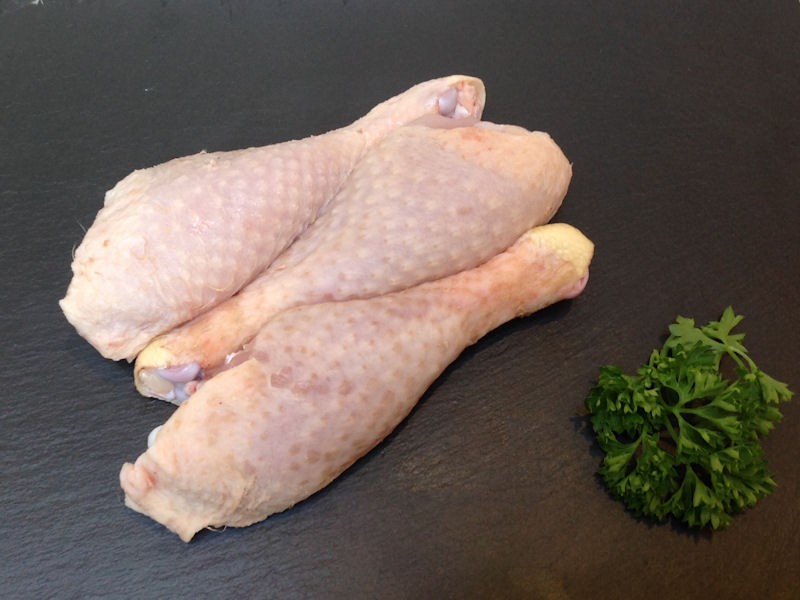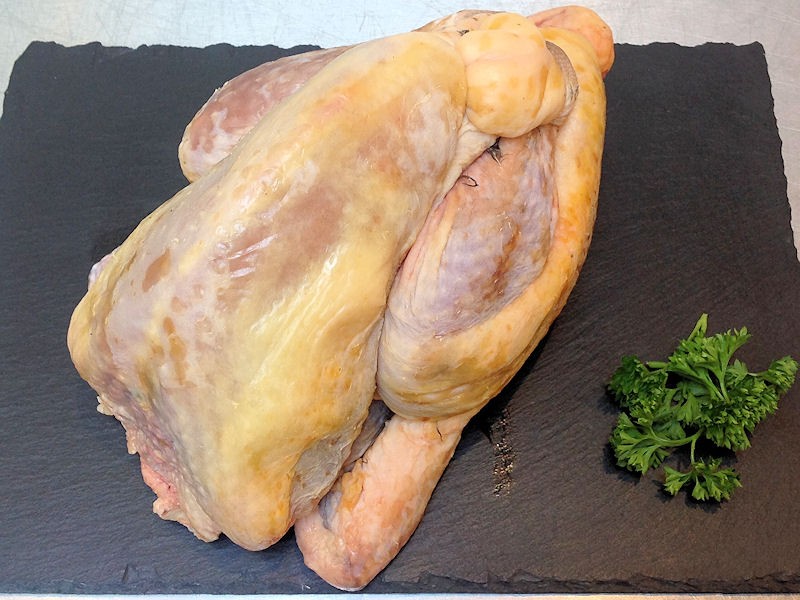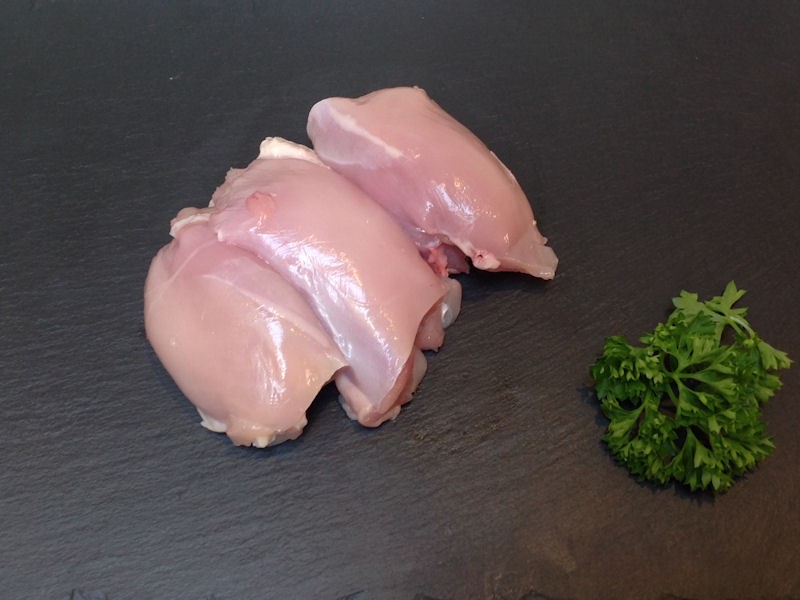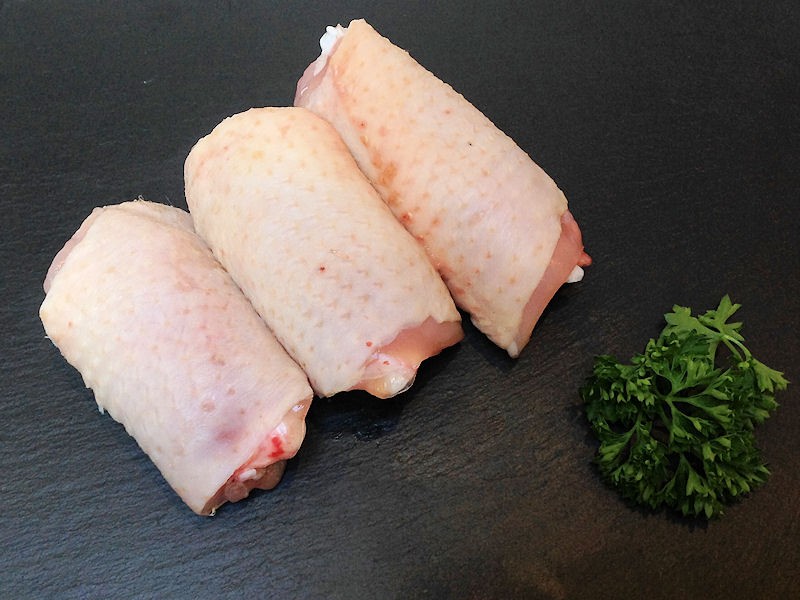Along side meat from the farm we also offer free range chickens from Devon, locally sourced game, including venison, pheasant,rabbit, hares when available.
Chicken history.
Chickens are medium-sized, chunky birds with an upright stance and are characterised by fleshy red combs and wattles on their heads. Males, known as cocks, are usually larger, more boldly coloured and have more exaggerated plumage than females (hens). Chickens are gregarious, omnivorous, ground-dwelling birds that in their natural surroundings search among the leaf litter for seeds, invertebrates and other small animals. They seldom fly except as a result of perceived danger, preferring to run into the undergrowth if approached. Today's domestic chicken (Gallus gallus domesticus) is mainly descended from the wild Red Junglefowl of Asia, with some additional input from the Grey Junglefowl.Domestication is believed to have taken place between 7,000 and 10,000 years ago and what are thought to be fossilized chicken bones have been found in northeastern China and dated to around 5,400 B.C. Archaeologists believe that domestication was originally for the purpose of cockfighting, the male bird being a doughty fighter. By 4,000 years ago, chickens seem to have reached the Indus Valley and 250 years later, they arrived in Egypt. They were still used for fighting and were regarded as symbols of fertility. The Romans used them in divination, and the Egyptians made a breakthrough when they learned the difficult technique of artificial incubation.Since then, the keeping of chickens has spread around the world for the production of food with the domestic fowl being a valuable source of both eggs and meat.
Since their domestication, a large number of breeds of chicken have been established but, with the exception of the white Leghorn, most commercial birds are of hybrid origin. In about 1800, chickens began to be kept on a larger scale, and modern high output poultry farms were present in the United Kingdom from around 1920 and became established in the United States soon after the Second World War. By the mid-20th century, the poultry meat producing industry was of greater importance than the egg-laying industry. Poultry breeding has produced breeds and strains to fulfil different needs; light-framed, egg-laying birds that can produce 300 eggs a year; fast-growing, fleshy birds destined for consumption at a young age, and utility birds which produce both an acceptable number of eggs and a well-fleshed carcase. Male birds are unwanted in the egg-laying industry and can often be identified as soon as they are hatch for subsequent culling. In meat breeds, these birds are usually castrated (often chemically) to prevent aggression.The resulting bird, called a capon, has tenderer, more flavorful meat as well.
A bantam is a small variety of domestic chicken, either a miniature version of a member of a standard breed, or a "true bantam" with no larger counterpart. The name derives from the town of Bantam in Java where European sailors bought the local small chickens for their shipboard supplies. Bantams may be a quarter to a third of the size of standard birds and lay similarly small eggs. They are kept by small-holders and hobbyists for egg production, for use as broody hens, for ornamental purposes and showing.







